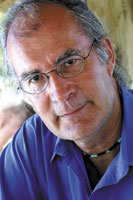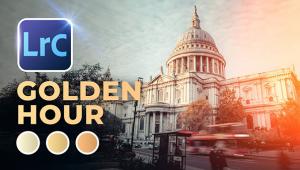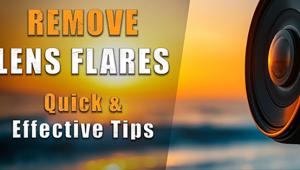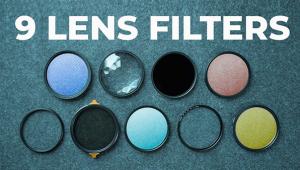The Art And Craft Of Lighting
Photography by definition is "drawing with light." It is creating
a frame around a play of light that translates to a continuous tonal image.
That definition helps identify one of the most important aspects of the craft,
which is first seeing and then understanding how the play of light influences
the image; how it expresses the photographer's vision and creates a mood
or influences the viewer. That light can be harsh, with an edge that creates
deep shadows and carves the subject's outlines into the image; or it can
be soft and ethereal, with near rounded edges that blend one tonal area gently
into another.
 In some cases we have to play the hand that is dealt us--we work in so-called
"natural" light and have to be careful with readings and settings
to ensure that we capture the maximum range of tonal values in each image. We
are forced to compress the tonal scale, and especially with digital imaging,
control the highlights so that they do not burn out and lose detail. In other
cases we utilize various exposure and development schemes, either when shooting
in Raw mode or when working with film. We read the shadows and drop two stops,
cutting back on film development time, or shoot in Raw mode with lower contrast
settings to create a "flat" image that we boost in Curves later.
In some cases we have to play the hand that is dealt us--we work in so-called
"natural" light and have to be careful with readings and settings
to ensure that we capture the maximum range of tonal values in each image. We
are forced to compress the tonal scale, and especially with digital imaging,
control the highlights so that they do not burn out and lose detail. In other
cases we utilize various exposure and development schemes, either when shooting
in Raw mode or when working with film. We read the shadows and drop two stops,
cutting back on film development time, or shoot in Raw mode with lower contrast
settings to create a "flat" image that we boost in Curves later.
In fact, if you study the craft and lore of photography, you will discover that much of what you do is work the medium as much as possible to emulate how the eye sees, and to bridge the gap between your and your medium's "perception." That goes for both the intensity and color of light, with the latter handled by filtration of film or the alteration of codes in White Balance settings to enhance or diminish the effect of the color cast of the light in the scene.
When working with the light supplied by "manmade" sources, such as strobes, continuous "hot" and "cold" devices, and bulbs, we encounter another set of disciplines. The assumption is that because we can control the intensity of light to such a fine degree with these devices that we can have much more artistic control over the outcome. That's true, perhaps, but it does not alleviate us from the study of a whole different aspect of the craft. Yes, it's the study and appreciation of light, but it also brings into play the balance and interplay of the lights we now can set up ourselves, and the "logic" of the way our lights, reflectors, and various modifiers work together. Studio and location lighting is a fine craft that once mastered can lead to a whole new world of creative expression, and is certainly worthy of study and practice by every photographer.
With that in mind we offer our annual Lighting issue, where we concentrate on the gear and techniques of manmade light sources. As you'll see, you don't have to sell the farm to get started in this field, or have a Masters to figure out how to get great images using them. As one who started doing studio lighting many moons ago I can certainly attest to the fact that we have more flexible, affordable, quality, and easy to use strobes and continuous lights than ever before. And with wireless, remote access, and, in digital, the ability to custom White Balance, there's a whole new world of lighting creativity available for anyone who wants to give it a try. The rewards can be great for both studio and location photographers, especially with the latest portable power units hitting the market. These allow you to go on location--indoors or out--and set up without worrying about where the nearest AC outlet might be.
On another note, as this issue goes to press we are getting set to depart for the worldwide photo and imaging show known as photokina. Every two years the photo community gathers in Cologne, Germany, for this gear and picture fest, and it's where we find out what's coming in the months, and often in the years, ahead.
Shutterbug readers now can receive discounts through our Gold Member Program. We have partnered with photographic suppliers to provide exclusive offers just for you. For more information go to www.shutterbug.com and click on the Gold Member bar to start your savings. Check often as we regularly add new sponsors.

 In some cases we have to play the hand that is dealt us--we work in so-called
"natural" light and have to be careful with readings and settings
to ensure that we capture the maximum range of tonal values in each image. We
are forced to compress the tonal scale, and especially with digital imaging,
control the highlights so that they do not burn out and lose detail. In other
cases we utilize various exposure and development schemes, either when shooting
in Raw mode or when working with film. We read the shadows and drop two stops,
cutting back on film development time, or shoot in Raw mode with lower contrast
settings to create a "flat" image that we boost in Curves later.
In some cases we have to play the hand that is dealt us--we work in so-called
"natural" light and have to be careful with readings and settings
to ensure that we capture the maximum range of tonal values in each image. We
are forced to compress the tonal scale, and especially with digital imaging,
control the highlights so that they do not burn out and lose detail. In other
cases we utilize various exposure and development schemes, either when shooting
in Raw mode or when working with film. We read the shadows and drop two stops,
cutting back on film development time, or shoot in Raw mode with lower contrast
settings to create a "flat" image that we boost in Curves later.In fact, if you study the craft and lore of photography, you will discover that much of what you do is work the medium as much as possible to emulate how the eye sees, and to bridge the gap between your and your medium's "perception." That goes for both the intensity and color of light, with the latter handled by filtration of film or the alteration of codes in White Balance settings to enhance or diminish the effect of the color cast of the light in the scene.
When working with the light supplied by "manmade" sources, such as strobes, continuous "hot" and "cold" devices, and bulbs, we encounter another set of disciplines. The assumption is that because we can control the intensity of light to such a fine degree with these devices that we can have much more artistic control over the outcome. That's true, perhaps, but it does not alleviate us from the study of a whole different aspect of the craft. Yes, it's the study and appreciation of light, but it also brings into play the balance and interplay of the lights we now can set up ourselves, and the "logic" of the way our lights, reflectors, and various modifiers work together. Studio and location lighting is a fine craft that once mastered can lead to a whole new world of creative expression, and is certainly worthy of study and practice by every photographer.
With that in mind we offer our annual Lighting issue, where we concentrate on the gear and techniques of manmade light sources. As you'll see, you don't have to sell the farm to get started in this field, or have a Masters to figure out how to get great images using them. As one who started doing studio lighting many moons ago I can certainly attest to the fact that we have more flexible, affordable, quality, and easy to use strobes and continuous lights than ever before. And with wireless, remote access, and, in digital, the ability to custom White Balance, there's a whole new world of lighting creativity available for anyone who wants to give it a try. The rewards can be great for both studio and location photographers, especially with the latest portable power units hitting the market. These allow you to go on location--indoors or out--and set up without worrying about where the nearest AC outlet might be.
On another note, as this issue goes to press we are getting set to depart for the worldwide photo and imaging show known as photokina. Every two years the photo community gathers in Cologne, Germany, for this gear and picture fest, and it's where we find out what's coming in the months, and often in the years, ahead.
Shutterbug readers now can receive discounts through our Gold Member Program. We have partnered with photographic suppliers to provide exclusive offers just for you. For more information go to www.shutterbug.com and click on the Gold Member bar to start your savings. Check often as we regularly add new sponsors.

- Log in or register to post comments

































